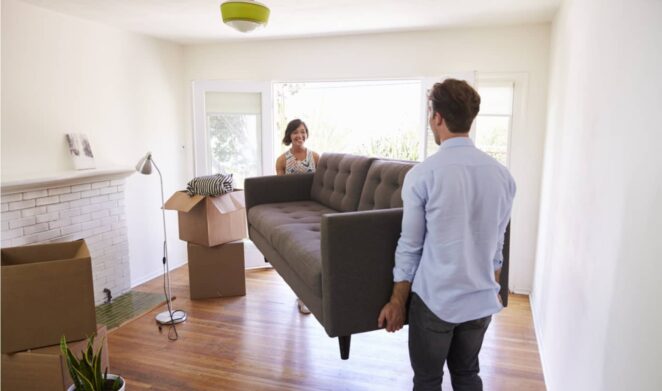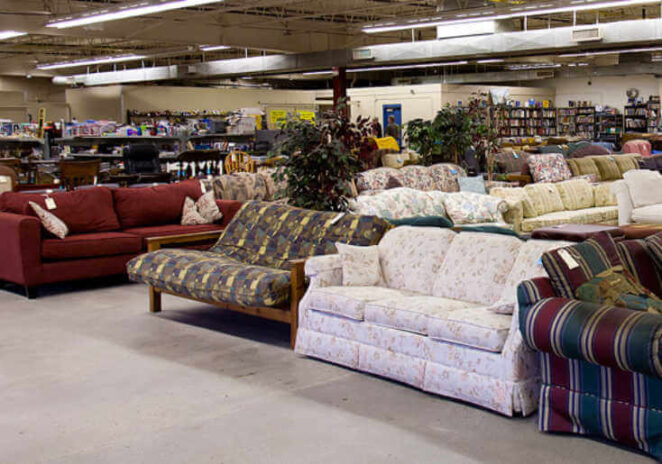In today’s market, buying used furniture has become increasingly popular due to its numerous benefits. Not only does it offer an opportunity to save money, but it also allows for unique and environmentally friendly choices. However, purchasing used furniture can be a daunting task, especially for those unfamiliar with the process. To help you navigate the marketplace with confidence, we have compiled a comprehensive guide with valuable insights. From assessing your needs to finalizing the purchase, these tips will equip you with the knowledge and tools necessary to make informed decisions and find the perfect used furniture for your home.
Importance of buying used furniture in today’s market

Buying used furniture holds significant importance in today’s market for several reasons, including the potential to discover treasures like a Media Armoire. Firstly, it allows you to save a substantial amount of money compared to purchasing new furniture. With the rising costs of living and inflation, finding affordable options for quality becomes paramount. Secondly, buying used furniture promotes sustainability by reducing waste and carbon footprint. By giving pre-loved furniture a new lease on life, you contribute to a more eco-friendly approach to home furnishing.
Assessing your needs and setting a budget beforehand
Before diving into the world of used furniture, it is essential to assess your needs and set a budget. Take some time to evaluate the specific pieces you require and the functionality they should offer. Consider the available space in your home and measure the dimensions to ensure a proper fit. Once you have a clear idea of your needs, set a realistic budget that aligns with your financial capabilities. By establishing these parameters in advance, you can focus your search and make more informed decisions when browsing through the marketplace.
Researching reputable sellers and platforms for used furniture

When buying used furniture, conducting thorough research on reputable sellers and platforms is crucial. Look for established sellers with positive reviews and a track record of providing quality products. Online marketplaces such as Craigslist, Facebook Marketplace, and eBay can offer a wide range of options. Additionally, consider visiting local thrift stores, consignment shops, or antique markets, as they often have unique pieces available at affordable prices. Take advantage of online forums and communities where users share their experiences and recommendations.
Inspecting Furniture for Quality, durability, and structural integrity
It is vital to assess its quality, durability, and structural integrity. Begin by inspecting the frame of the piece, ensuring it is sturdy and free from cracks or damage. Test the stability by applying gentle pressure and ensuring that it does not wobble or creak. Check for any signs of wear or damage on the upholstery, such as tears or stains. If it has cushions or padding, evaluate their condition and resilience.
Evaluating the condition and identifying potential issues

In addition to assessing the overall quality, it is essential to evaluate the condition of the used furniture and identify any potential issues. Look for any visible signs of wear and tear, such as scratches or dents. Pay close attention to joints, screws, or hinges, ensuring they are intact and functioning properly. Check for signs of infestations, such as bed bugs or termites, which can cause significant damage and pose health risks. Additionally, inspect it for any peculiar odors that may indicate mold or mildew. Identifying these potential issues beforehand will help you make an informed decision and avoid unpleasant surprises.
Understanding different types of materials and their maintenance requirements
When buying used furniture, it is crucial to have a basic understanding of different materials and their maintenance requirements. Wood furniture, for example, can vary in quality and durability depending on the type of wood used. Research the specific wood species to understand its characteristics and ensure it aligns with your preferences. Similarly, upholstery materials such as leather, fabric, or microfiber have different cleaning and care instructions. Consider your lifestyle and the amount of maintenance you are willing to undertake when selecting it with specific materials.
Checking for signs of wear and tear, stains, and odors

During your inspection, pay close attention to signs of wear and tear, stains, and odors on the used furniture. Surface scratches and minor blemishes are generally acceptable, as they can often be easily remedied. However, extensive damage or deep stains may require more significant repairs or reupholstering. Persistent odors, particularly from smoke or pets, can be challenging to eliminate. Ensure that you are comfortable with the level of restoration or cleaning required for the piece in question.
Negotiating prices and understanding fair market value
When buying used furniture, negotiating prices is often expected and can lead to significant savings. Research the fair market value of similar pieces to have a benchmark for negotiation. Consider factors such as age, condition, brand, and rarity when assessing the value of the item. Approach negotiations respectfully and be prepared to walk away if the price does not align with your budget or the perceived value.
Considering transportation and delivery logistics for larger furniture items

Transportation and delivery logistics are important considerations, especially when purchasing larger furniture items. Determine whether the seller offers delivery services or if you need to arrange transportation yourself. Measure doorways and hallways in your home to ensure the furniture can be maneuvered into its intended location without difficulty. If necessary, enlist the help of friends or professional movers to ensure a smooth and safe transportation process. By planning for these logistical aspects, you can avoid unnecessary stress and complications.
Exploring options for refurbishing or repurposing used furniture
One of the advantages of buying used furniture is the potential for refurbishing or repurposing. If you come across a piece with great potential but in need of a facelift, consider the possibility of refurbishing it yourself or hiring a professional. A fresh coat of paint, reupholstering, or replacement hardware can transform a worn-out piece into a unique and personalized gem. Additionally, think creatively about repurposing furniture for different functions. For example, a vintage trunk can serve as a coffee table, or a bookshelf can be turned into a stylish bar cart. Let your imagination soar and explore the possibilities.
Finalizing the purchase and ensuring a smooth transaction process

Once you have evaluated it, negotiated the price, and considered logistics, it’s time to finalize the purchase. Confirm all the details with the seller, including the agreed price, delivery arrangements, and any additional terms or conditions. If possible, draft a written agreement to protect both parties and avoid any misunderstandings. Use secure payment methods, such as PayPal or bank transfers, for online transactions. When purchasing in person, bring a friend along for added safety and support.
Conclusion
Navigating the marketplace for used furniture can be an exciting and rewarding experience when armed with the right knowledge and tools. By following these tips, you can approach the process with confidence, make informed decisions, and find hidden treasures that will enhance your living space.




